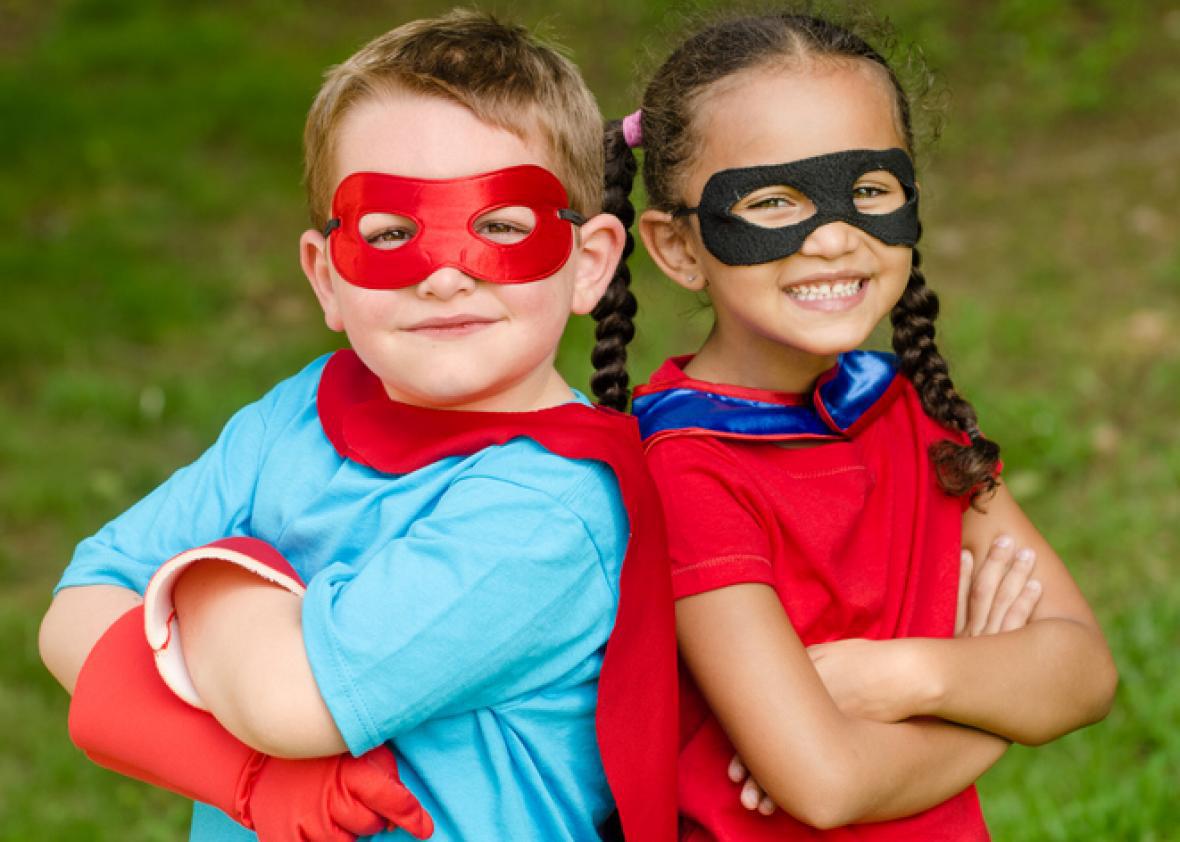According to a survey from the National Retail Federation, this Halloween, more kids will dress up as action stars and superheroes than princesses for the first time in 12 years. With its recent poll of 6,791 Americans, the NRF predicts that more than 3 million children will wear hero costumes for trick-or-treating next month.
A quick glance at the survey results might suggest a welcome change in gendered expectations for little girls. Princess culture celebrates physical beauty and the attraction of male suitors; superhero culture celebrates daring and smarts employed for good. If children are starting to privilege the latter over the former—and if girls are starting to see themselves as capable world-savers as much as ballgoers born into royalty—that’s great.
But this survey is so peculiarly written, it’s hard to draw any real conclusions from the data it yielded. Here’s the full top 10 list of kids’ costumes:
- Action/Superhero
- Princess
- Animal (Cat, Dog, Lion, Monkey, etc.)
- Batman Character
- Star Wars Character
- Tie: Witch & DC Superhero (excl. Batman)
- Frozen Character (Anna, Elsa, Olaf)
- Marvel Superhero (excl. Spiderman)
- Zombie
- Spiderman
Further down the list from “princess” and “action/superhero,” there’s “Batman character” at No. 4, “Star Wars character” at No. 5, “DC superhero (excluding Batman)” at No. 6, “Marvel superhero (excluding Spiderman)” at No. 8, and Spiderman himself at No. 10. All of these include superheroes, so what does the No. 1 answer, “action/superhero,” even mean? A generic cape and mask? An obscure antihero from an indie graphic novel? If all the specific, branded superheroes were added into the general “action/superhero” pot, that category would expand by millions of kids.
In other words, superheroes have probably been besting princesses for a long time. There are only two survey options in the top 10 Halloween costume categories that could add heft to the princess population: “Frozen character” and “Star Wars character.” Each of these categories comprise several non-princess characters, too, though. In Frozen, there’s Olaf the snowman, and the only princess in the Star Wars franchise is Leia. Added to the generic princess pot, these characters probably wouldn’t have make enough of a dent to beat superheroes in previous years.
So, as far as this Halloween survey is concerned, what looks like a shift in power from princesses to superheroes might just be a misleading organization of data. But Halloween costume trends are just minor symptoms of broader changes in the cultures of princesses and superheroes, which are far more telling and influential. Modern Disney heroines like Merida of Brave and the titular Moana are more complex and capable than their predecessors, and there’s no doubt that girls and women are getting better billing in action movies. Rey of Star Wars: The Force Awakens is the most prominent example of the past year, but there’s also been a recent push to up the visibility of existing female superheroes and supervillains in fictional universes, as with DC’s Super Hero Girls line, which launched this spring. There are plenty of legitimate criticisms of some of these efforts—the characters’ body proportions are inhuman; they’re dressed in sexy skirts and skimpy tops; they’re still invariably squeezed into romantic storylines. These are things that will change, slowly, as the feminist revolution bears down on the superhero industrial complex. For now, the thought of bejeweled light sabers slowly replacing royal scepters is something worth cackling about.
